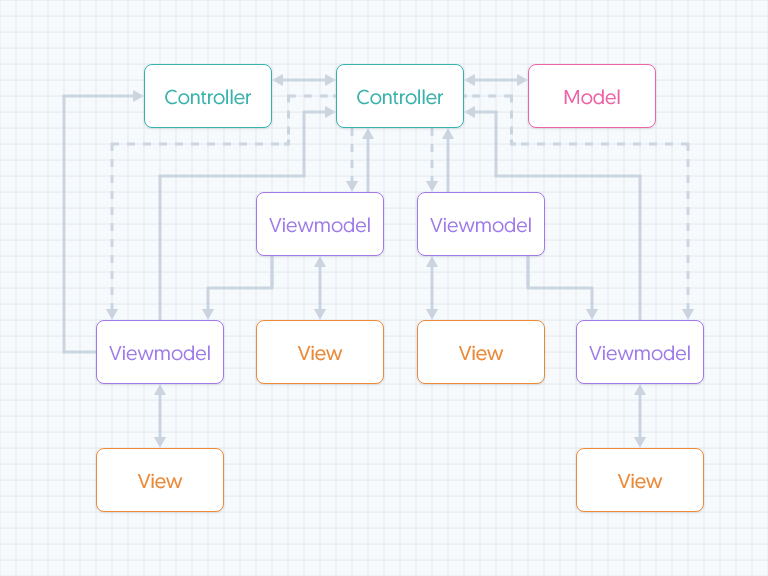model-view-viewmodel-controller
The model-view-viewmodel-controller software architecture pattern answers the question how to work with modular programming in systems that use JIT dependency injection. This pattern is based upon model–view–viewmodel architecture while borrowing the “widgetization” concept from Hierarchical model–view–controller.
Table of Contents
Overview
This document will describe:
- creating modules
- creating submodules
- communication between modules
- communication between modules and submodules
- passing data up the hierarchy
- passing data to an unknown number of submodules
Controllers
The role of a controller is to handle input from a view model or another controller. Controllers will manipulate and verify the data before passing it to a model.
- controllers are static
- controllers can communicate with other controllers
- controllers instantiate models
- controllers can communicate with their models
- controllers can have children (view models)
- controllers can create children
- controllers are unaware of their children
- controllers can pass information to their children
Models
The role of a model is to manage a state.
- models manage a state
- models can communicate with local controllers
- models can communicate with external controllers
View Models
The role of a view model is to handle input from the view or a controller.
- view models can communicate with controllers
- view models can manage a local state
- view models are bound to a view
- view models can be self instantiated
- view models can have children
- view models can directly communicate with child view models
- view models can indirectly communicate with other view models
Views
The view is the structure, layout, and appearance of what a user sees on the screen.
- views receive input from the user
- views send input to the view model
- views are data-bound to its view model
Structures
Basic Structure
The basic structure diagram showcases the hierarchy and flow of communication between a controller, its model, its view models, and their views. Note that view models do not require a parent controller and can be self instantiated.

Expanded Structure
The expanded structure diagram showcases the hierarchy and flow of communication between two controllers, where one controller has children. Note that view models can have child view models and that data only flows from the parent view model to the child view model. Any communication up the hierarchy is passed directly to the parent controller.
